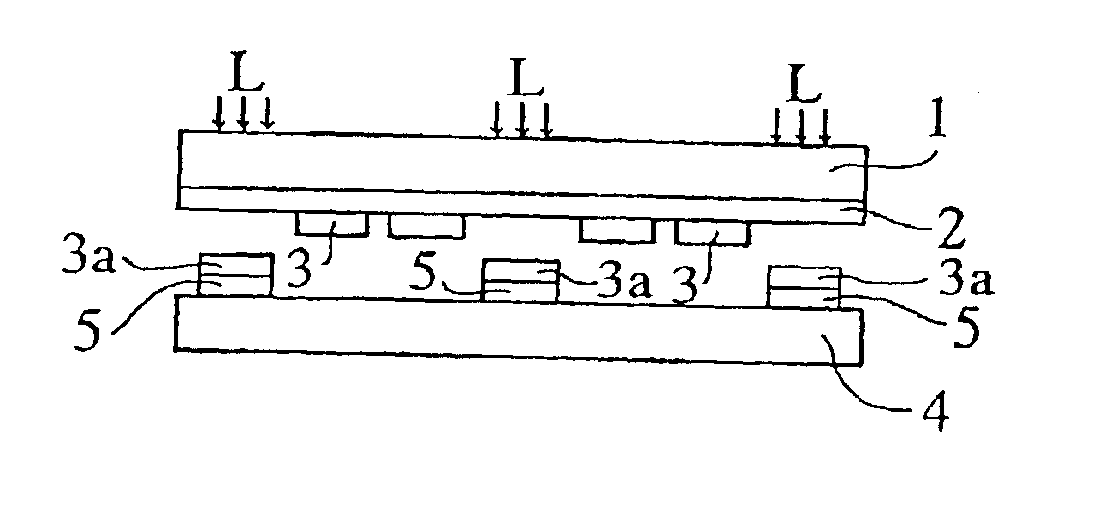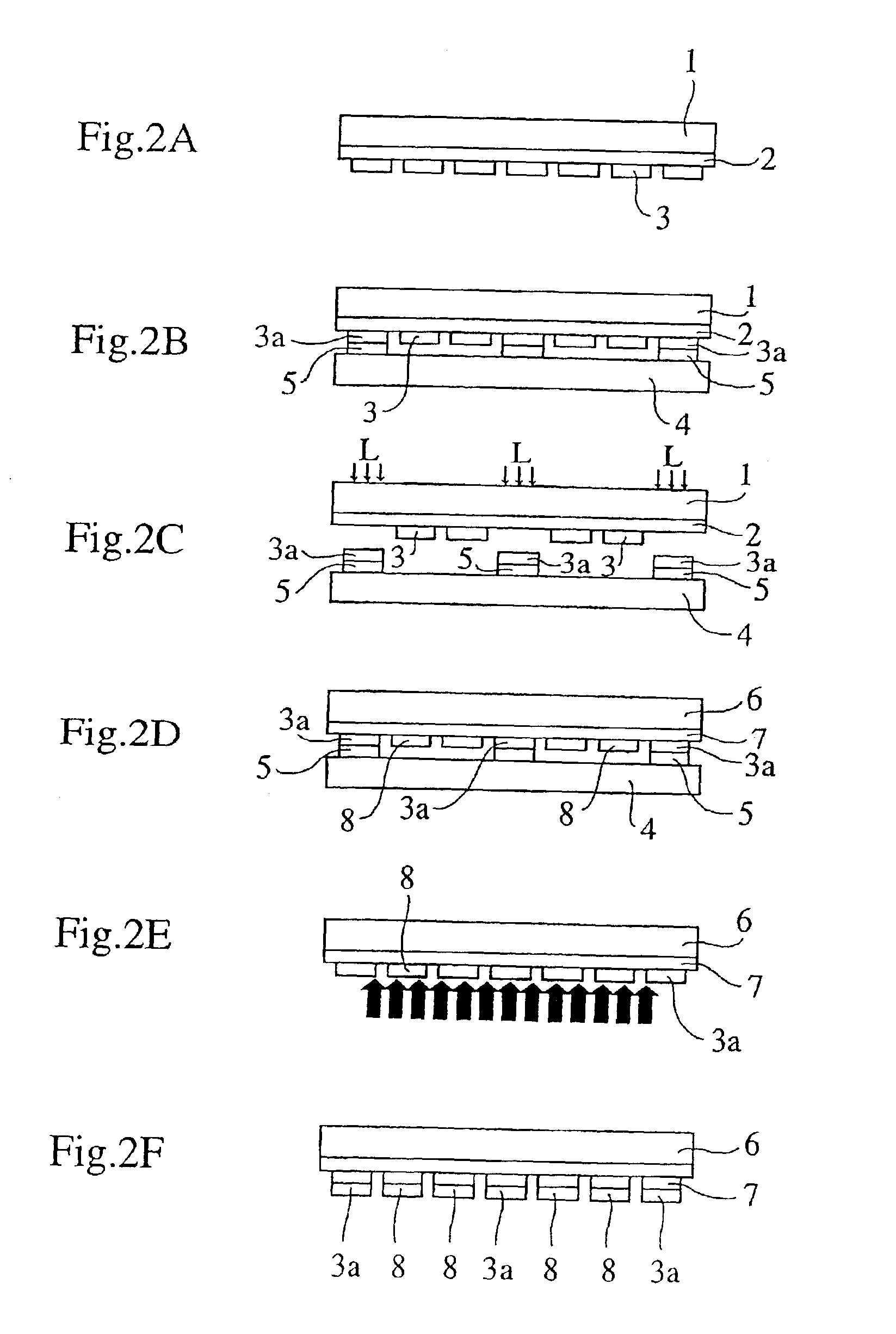Device transferring method, and device arraying method and image display unit fabricating method using the same
a technology of image display unit and transfer method, which is applied in the manufacture of electrode systems, electric discharge tubes/lamps, instruments, etc., can solve the problems of difficult to heat only the desired parts, positional deviation and peeling of other parts, and complicated work, etc., to achieve efficient and accurate transfer of devices
- Summary
- Abstract
- Description
- Claims
- Application Information
AI Technical Summary
Benefits of technology
Problems solved by technology
Method used
Image
Examples
second embodiment
In the above-described method of arraying light emitting diodes, since the device transferring method is used, that is, since the light absorbing material 56a for increasing a light absorptivity of the adhesive layer 56 against the laser beams 73 is contained in the adhesive layer 56, it is possible to efficiently, selectively heat the portion, corresponding to each light emitting diode 42 to be transferred, of the adhesive layer 56, and hence to efficiently array the light emitting diodes 42.
The presence of the light absorbing material 56a for increasing a light absorptivity of the adhesive layer 56 against the laser beams 73 has another advantage that since the laser beams 73 are absorbed by the light absorbing material 56a and therefore the laser beams 73 do not reach the light emitting diode 42, with a result that the light emitting diode 42 is prevented from being damaged by the laser beams 73. As a result, it is possible to array the light emitting diodes 42 without damaging ...
third embodiment
In the device transferring method described above, since the peeling of the devices 3 from the base substrate 1 and the adhesive bonding of the devices 3 to the transfer substrate 83 can be performed only by the heating process, it is possible to eliminate the need of providing an attracting head and an ultraviolet irradiation apparatus, which has been required in the case of using an ultraviolet reactive type material, and hence to transfer the devices 3 with a simple configuration. Since the transfer process is simple, the positioning of the devices 3 can be easily, certainly performed, so that it is possible to accurately transfer the devices without occurrence of any positional deviation in transferred devices. Further, by positioning a reference one of the devices 3 to be transferred at a specific position, the other devices to be transferred are collectively positioned at specific positions, it is possible to accurately transfer the devices without occurrence of any deviation...
PUM
| Property | Measurement | Unit |
|---|---|---|
| size | aaaaa | aaaaa |
| size | aaaaa | aaaaa |
| size | aaaaa | aaaaa |
Abstract
Description
Claims
Application Information
 Login to View More
Login to View More - R&D
- Intellectual Property
- Life Sciences
- Materials
- Tech Scout
- Unparalleled Data Quality
- Higher Quality Content
- 60% Fewer Hallucinations
Browse by: Latest US Patents, China's latest patents, Technical Efficacy Thesaurus, Application Domain, Technology Topic, Popular Technical Reports.
© 2025 PatSnap. All rights reserved.Legal|Privacy policy|Modern Slavery Act Transparency Statement|Sitemap|About US| Contact US: help@patsnap.com



